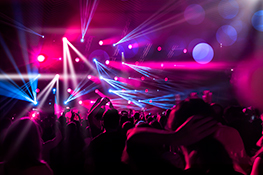LED Par Cans: Your Complete Guide to Brightness, Color, and Beam Control
Stage lighting is an art, and LED PAR cans are among the most versatile tools in a lighting designer’s arsenal. These powerful and efficient fixtures offer unparalleled control over brightness, color, and beam shape, transforming any performance space. This comprehensive guide dives deep into the nuances of LED PAR cans, helping you choose the perfect ones for your needs.
Understanding LED PAR Can Technology
LED PAR cans have revolutionized stage lighting, replacing their halogen predecessors with significant advantages. The core technology involves arrays of high-power LEDs, capable of producing intense light output while consuming significantly less energy. This energy efficiency translates to lower operating costs and reduced heat generation, making them safer and more reliable for extended use. Further advancements include improved color mixing, precise dimming curves, and a wider variety of beam angles.
Brightness: Lumens and Efficacy
Measuring Brightness: Lumens
The brightness of an LED PAR can is measured in lumens. A higher lumen rating indicates a brighter light output. When comparing different PAR cans, always check the lumen rating under the same testing conditions, as variations in measurement methods can skew comparisons. Consider the size of the venue and the desired illumination level when choosing the appropriate lumen output.
LED Efficacy: Lumens per Watt
Beyond raw lumens, consider the LED efficacy, measured in lumens per watt (lm/W). This metric reveals how efficiently the fixture converts electricity into light. Higher lm/W values mean greater brightness for the same energy consumption, translating into cost savings and reduced environmental impact.
Color: Achieving the Perfect Hue
Color Temperature: Kelvin (K)
Color temperature, measured in Kelvin (K), determines the “warmth” or “coolness” of the light. Lower Kelvin values (e.g., 2700K) produce warmer, more yellowish light, while higher values (e.g., 6500K) result in cooler, bluish light. Understanding the impact of color temperature on mood and atmosphere is crucial for effective lighting design.
Color Rendering Index (CRI): Accurate Color Reproduction
The Color Rendering Index (CRI) measures how accurately a light source renders colors compared to natural sunlight. A higher CRI (closer to 100) means more accurate and vibrant color reproduction, essential for showcasing costumes, sets, and performers effectively. Look for PAR cans with high CRI values for professional applications.
RGB, RGBW, and Other Color Mixing Systems
Many LED PAR cans utilize RGB (Red, Green, Blue) or RGBW (Red, Green, Blue, White) LEDs for creating a wide spectrum of colors through additive color mixing. Some advanced models even offer CMY (Cyan, Magenta, Yellow) or other color mixing systems, allowing for more precise and nuanced color control. The choice depends on the complexity of the lighting design and the required level of color accuracy.
Beam Control: Shaping the Light
Beam Angle: Narrow, Medium, or Wide
The beam angle determines the spread of the light. Narrow beam angles (e.g., 4°) are ideal for spotlighting specific areas, while wide beam angles (e.g., 60°) create a broad wash of light. Choosing the right beam angle is crucial for achieving the desired lighting effect and depends heavily on the space and the intended illumination pattern.
Lens Types and Accessories: Enhancing Beam Control
Different lens types can further modify the beam angle and shape. Some PAR cans offer interchangeable lenses, allowing for greater flexibility. Accessories such as barn doors, gobos, and diffusers provide additional tools for shaping and controlling the light beam, enabling highly creative lighting designs.
Choosing the Right LED PAR Cans for Your Needs
Selecting the ideal LED PAR cans requires considering several factors, including budget, venue size, desired brightness, color accuracy requirements, and the complexity of the lighting design. Carefully evaluate the specifications of different models, comparing lumen output, efficacy, CRI, color mixing capabilities, and beam control options. Don’t hesitate to consult with lighting professionals for expert advice.
Conclusion
LED PAR cans offer unparalleled versatility and efficiency for stage lighting. By understanding the key aspects of brightness, color, and beam control, you can select the perfect fixtures to transform your performance space and elevate your productions to new heights. Explore the diverse range of LED PAR cans available and discover the power of precise, vibrant, and energy-efficient lighting.


 Auditorium Construction Services
Auditorium Construction Services 